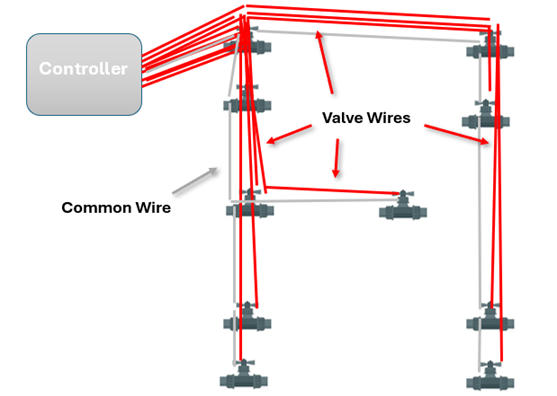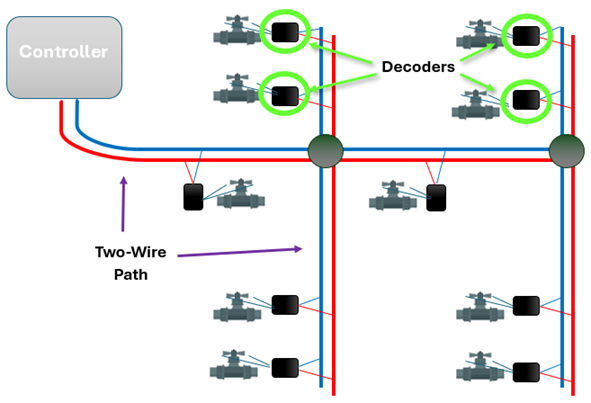Stay up to date with Tempo Announcements and News

Irrigation Systems are Using Less Wires

In commercial irrigation, a significant shift is underway – one embracing efficiency and innovation by reducing reliance on valve control involving multiple wire strands. This movement has been brewing for decades, dating back to the experimental endeavors of the late 1960s when the concept of a "two-wire" irrigation system was first explored. However, what was once fringe technology has now evolved into a mainstream trend, gaining substantial momentum in recent years.
The transition from conventional "multi-wire" systems — where each valve necessitates its own dedicated wire — to the more streamlined two-wire systems, is gaining traction. This evolution is not merely a trend; it's a strategic response to the growing demand for efficient irrigation solutions. Moreover, alongside two-wire systems, the landscape is witnessing the emergence of even more innovative options, such as "wireless" battery-operated alternatives for valve control.
Two-wire systems offer several advantages: they require less wiring, are easier to expand, and can cover significant distances (in some instances, exceeding six miles). Moreover, they facilitate intelligent operation by continuously monitoring the condition of electrical components and regulating water usage, flow rates, optimal pressure, and pump efficiency. This enhanced functionality is achieved through seamless communication integration across multiple sensors and control platforms, even with diverse points of connection to water sources, while considering weather and soil conditions.
In a two-wire system, each valve is linked to the same pair of wires, requiring a "decoder" for individual

valve control, dictating when they open. Unlike conventional systems, which rely on individual 24V AC circuits connecting each valve with a shared common wire back to the controller, two-wire systems utilize a blend of voltage and communication. Additionally, sensor decoders are available for monitoring flow, moisture levels, and other parameters.
The prevalence of two-wire systems is becoming increasingly unavoidable in modern irrigation and landscaping practices. The vast majority of contractors now oversee at least one property equipped with a two-wire system. If you were to poll landscape workers on how many of their contracts involve properties with a two-wire system, you’ll often get answers of somewhere around 5% - 10%. Notably, larger contractors, entrusted with managing more expansive and freshly built properties, are increasingly adopting two-wire systems since they handle complex irrigation requirements more efficiently. The trends are regional, but commercial properties are installing anywhere from 30% two-wire systems in some states to as much as 90% in others.
New wireless options are also emerging, providing additional flexibility and variety in irrigators' array of irrigation solutions. Hunter Industries recently introduced their wireless valve link, featuring battery-controlled valve activation and radio communication with controllers. This complements their popular nodes, which can be programmed either through button presses in the valve box or, in the case of their Node-BTs, via a dedicated app using Bluetooth technology. These advancements further enhance accessibility and ease of use.
As technology evolves, the irrigation industry undergoes a paradigm shift toward enhanced flexibility, control, and efficiency. However, this transformation requires industry technicians to adapt in terms of tools and training. Milliamp clamp meters such as the CMA-360B and buried markers like the OmniMarker II / Spike Markers are anticipated to become indispensable assets in irrigation maintenance, and Tempo Communications is prepared to assist technicians in maximizing their utility.
